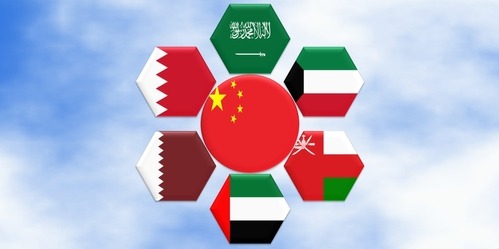China overtakes West as the Gulf’s largest trading partner
China has surpassed the West to become the Gulf region’s largest trading partner.
Gulf-China trade rose 14.2% to $257 billion in 2024, edging past Gulf’s combined trade with Western economies – comprising of the US, UK and the Eurozone - for the first time, according to a report published by think tank Asia House.
That came as trade flows between the Gulf region and the West dipped around 4% to reach $256 billion.
While the current gap between the Gulf’s trade flows with China vis-à-vis the West is narrow, it is expected to broaden to $75 billion by the year 2028. Gulf-China trade is projected to reach $375 billion the same year.
“While the margin is narrow and there may be short-term fluctuations in the relative weight of these partners, particularly given the downward trend in oil prices in 2025, structural and fundamental factors overwhelmingly suggest Gulf-China trade will widen its lead over the West in the coming decade,” the report read.
Gulf-Asia trade has grown by 40% over the last decade, from $368 billion in 2014 to a $516 billion in 2024.
Gulf’s trade with emerging Asia also rose 14.4% in 2024 to $516 billion despite lower oil prices. Emerging Asia consists of 34 Asian economies, including China, India, and most ASEAN members, but excluding Japan, Singapore, South Korea, Hong Kong, Macao, Taiwan, Australia, and New Zealand.
Energy remains foundational to the GCC’s Asian pivot, with Asia expected to remain the world’s fastest-growing energy market through at least 2050.
The UAE is driving the Gulf’s trade with Asia, with the country’s trade with emerging Asia rising 27% in 2024 to $268 billion, driven by its comprehensive economic partnership agreement (CEPA) programme, SWF deployments and interest from Asian investors and businesses.
On a bilateral basis, the UAE-China corridor stood out in particular, with bilateral trade climbing 28% to $119 billion in 2024, overtaking UAE-West, which rose to nearly $110 billion.
Two-way sovereign wealth interests
Gulf-Asia financial interconnectivity has also developed in tandem, with Asia receiving 40% of the estimated $56 billion deployed by Gulf sovereign wealth funds in the first nine months of 2025.
Simultaneously, Asian financial services firms are expanding into the Gulf to capitalise on its expanding sovereign and private wealth pools.
“Financial institutions on both sides of the corridor are preparing for a greater influx of capital in the future, with increasing collaboration between Asian and Gulf bourses,” the research suggested.

Salaam Gateway